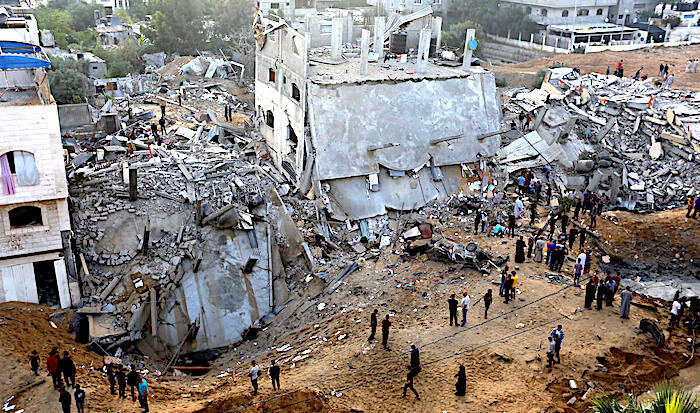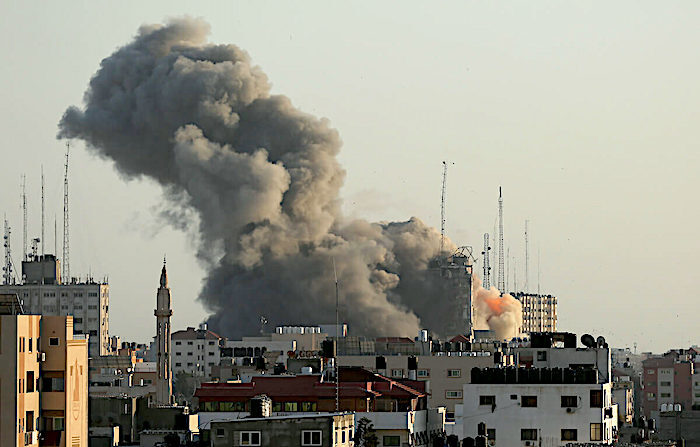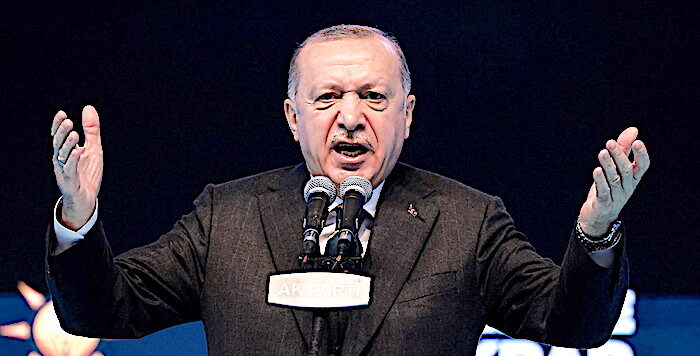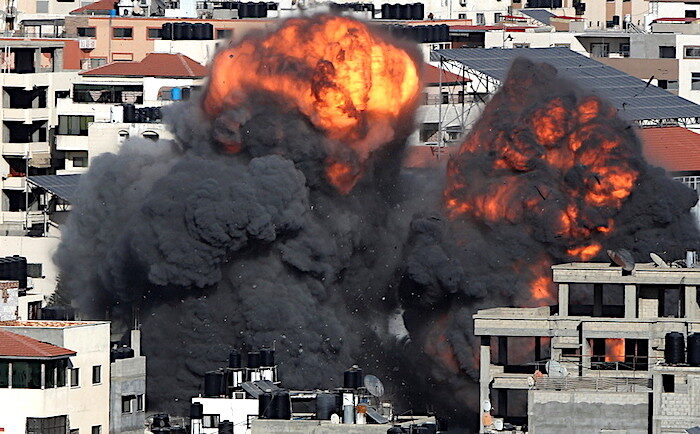
© Ashraf Amra/APA ImagesPalestinians assess the damage in Northern Gaza Strip town of Beit Lahia
May 13, 2021
- 332,111 Palestinians tested positive for COVID-19; 317,464 recoveries; 3,669 deaths
- Of those who tested positive, 197,640 live in the West Bank, 105,630 live in the Gaza Strip and 28,841 live in East Jerusalem
- 839,059 Israelis tested positive for COVID-19; 831,888 recoveries; 6,379 deaths
*Palestinian figures are as of Tuesday, May 11, 2021Ordinarily, we dedicate this newsletter to the latest updates around the pandemic with an emphasis on distilling data to our readers.
This week, because Israel is engaged in the most intense escalation across the occupied Palestinian territory in seven years, we're shifting gears but still using our same approach.
Before we step away from COVID-19, let's run down the numbers we do have. According to the UN's humanitarian coordinator, OCHA, laboratory tests, and vaccinations have "drastically reduced" over the past few days.
Although we have not been able to confirm it at the time of publication, we suspect that testing and vaccinations have completely shut down. The Palestinian Ministry of Health has not updated its number of new cases since Tuesday, and the World Health Organization's live dashboard shows May 9, 2021, as the most recent date of statistics.As a result, we have only a couple of days' worth of new confirmed cases at our disposal to analyze, and we suspect those numbers (1,500 new cases for this week)
only reflect changes in the West Bank and East Jerusalem, and data from Gaza over the weekend before this escalation mounted.
For the last few weeks, over 60% of new cases are in Gaza. With scores relocating to shelter with family, we're anticipating any degree of social distancing has been abandoned.

© Bashar Taleb/APA ImagesSharouk Tower as it collapsed hit by Israeli airstrike in Gaza City
In the last few days,
"some primary health-care clinics were severely or partially damaged by heavy shelling," but we don't know where it is located in Gaza, or the extent of the devastation, according to the UN.Compounding the already impacted health system, the
Erez and Kerem Shalom checkpoints are currently closed, and no humanitarian workers or medical equipment can enter or exit. The Palestinian Authority already purchased 4.5 million doses of the Pfizer and Sputnik V vaccines for $27.5 million. We don't know the shipment schedule, but obviously,
no new doses can enter Gaza until a ceasefire is declared.If you recall from the last few months, we've reported that COVID-treating hospitals in Gaza were already reaching capacity. Health officials decided early on to sequester coronavirus patients from others, dedicating entire facilities to treating patients with the respiratory disease, including one of Gaza's most equipped medical centers,
the European hospital. This measure bolstered efforts to contain and quarantine patients with active illnesses.
As of last week, 43% of regular hospital beds were full, and 45% of ICU beds, according to the WHO's
latest situation report.The big picture:Since Monday, Israeli military officials have stated they hit 650 targets in Gaza, and Hamas fired 1,500 rockets into Israel, including a salvo of nearly 500 in the early morning hours on Thursday. This escalation is the most severe since the 2014 war when militant groups in Gaza fired 4,562 rockets towards Israel over the course of 51 days. As of Thursday evening, Hamas has already fired more than 30% of the total munitions fired during the 2014 war,
including sites deep into Israel causing planes to be grounded. Similarly, Israel struck more than 5,000 sites in Gaza in 2014. Again,
as of last night, Israeli forces have already targeted over 13% of the total number of sites it hit seven years ago during the two-month war, including a number of pivotal locations such as 14 residential high-rise towers. While the figures are still coming in, this rate of damage exceeds that of the first few days of the last major escalation.The government media office in Gaza said (as reported by
OCHA) on Thursday that
more than 500 housing units were destroyed in airstrikes, and another 2,100 were damaged; 23 schools have been destroyed on damaged; the desalination plant has been shut down since Monday, cutting off water access to over 10% of the population. Of those who lost piped water, half live in Gaza City.Gaza's power plant is still operational, but only able to supply power for half of the day. Rolling blackouts are reaching up to 12 hours a day.
Comment: As the horrific news from Gaza continues, we find both condemnation and support for the ongoing slaughter and destruction.
14/5/2021 12:25: With Israel on a rampage,
Putin and Merkel comment on the Gaza crisis, as the US blocks UN Security Council actions:
Russian President Vladimir Putin warned on Friday that the current escalation between Israel and Palestine poses a direct threat to Russia's security. Holding a meeting with the Russian Security Council, Putin suggested discussing the situation in Jerusalem and Gaza Strip prior to the agreed agenda.
"I would like to ask my colleagues to comment on the current situation in the Middle East, I mean the escalated Palestinian-Israeli conflict - this is happening in the immediate vicinity of our borders and directly affects our security interests."
German Chancellor Angela Merkel on Friday issued a statement which appeared a show of strong support from Israel's operations in Gaza, which as of Thursday night has included ground troops in operations at the border and over one hundred warplanes as well as tank fire.
"Chancellor decidedly condemns the ongoing rocket attacks on Israel, these are terrorist attacks ... Nothing justifies these acts of terrorism. The rocket attacks have to be ceased immediately, the German government supports Israel's right to self-defense," a spokesperson for the Chancellor said.
"Here in Germany, people are taking to the streets to protest against Israel's policies. They can do it peacefully, this is natural in our democracy. However, those who use these protests to espouse antisemitism are abusing the right of assembly. Our democracy will not stand for antisemitic rallies," Seibert added.
14/5/2021 17:30: Netanyahu advises: "It's not over." as he vows to 'reach' Palestinian Hamas militants 'everywhere':
His words came as the violent standoff between Tel Aviv and the Gaza Strip entered its fifth day. The IDF continues to target Gaza with airstrikes that have already claimed lives of 119 Palestinians, including 27 children.
"Hamas leaders think they can escape from our grasp. They cannot escape. We can reach them everywhere - all of [Hamas's] people and we will continue to do so. They attacked our capital, they fired missiles at our cities; they are paying and will continue to pay a heavy price for that."
14/5/2021 18:58: Israeli Jews and Arabs staged joint rallies across multiple cities in Israel on Friday demanding an end to the recent spate of inter-ethnic violence between their communities:
One of the rallies, dubbed 'Jews and Arabs - Refusing to Be Enemies', took place in a square in Eilat, southern Israel, with protesters carrying signs reading "Stop," "We are Hope" and "Love Thy Neighbour as Thyself."
14/5/2021 21:19: Outraged, Turkish President Erdogan
condemned Israel as a terrorist state:

© Reuters/Umit Bektas.jpgTurkish President Recep Tayyip Erdogan
"This terrorist state that tries to plunder a city like Jerusalem, which houses places that are holy for Muslims, Christians and Jews, has crossed all limits. It is imperative that UN Security Council takes steps to ensure peace in Jerusalem in line with decisions of the General Assembly.
"It is a duty for all of humanity to resist [Israel's] aggression against Palestinian cities and Jerusalem. The Organization of Islamic Cooperation (OIC) should particularly take a 'concrete' stance on the issue.
"If we do not immediately stop Israel's aggression in Palestine and... in Jerusalem, tomorrow, everyone would be a target of this brutal mentality. Those who chose to remain silent or backed Israel 'for political and ideological reasons should know that their turn will come one day.'"
Erdogan said that he discussed the Israeli airstrikes in Gaza with the leaders of some 20 nations, including Russian President Vladimir Putin and the Pakistani Prime Minister Imran Khan.
Earlier, leaders of several Western nations including Austria and Germany expressed their support for Israel's right of "self-defense." Leaders of France and the UK also earned praise from Israeli Prime Minister Benjamin Netanyahu for supporting Tel Aviv.
14/5/2021 23:22 The
IDF claims it destroyed Hamas security chief's office; Israeli port city of Ashdod was hit:

© Reuters/Mohammed SalemIsraeli strike in Gaza City, May 14, 2021
Health officials in Gaza say 122 Palestinians, including 31 children, have perished, and at least 900 people were injured in IDF strikes, which have targeted apartment blocs and other high-rise structures, some housing media offices.
In Israel, at least seven people have been killed in Hamas rocket fire, among them a soldier and a 6-year-old girl.
See also:







ttps://www.news.com.au/finance/business/media/israels-army-destroys-al-jazeera-associated-press-offices-in-gaza/news-story/e63c2638ec22166415cc089bcd38446d